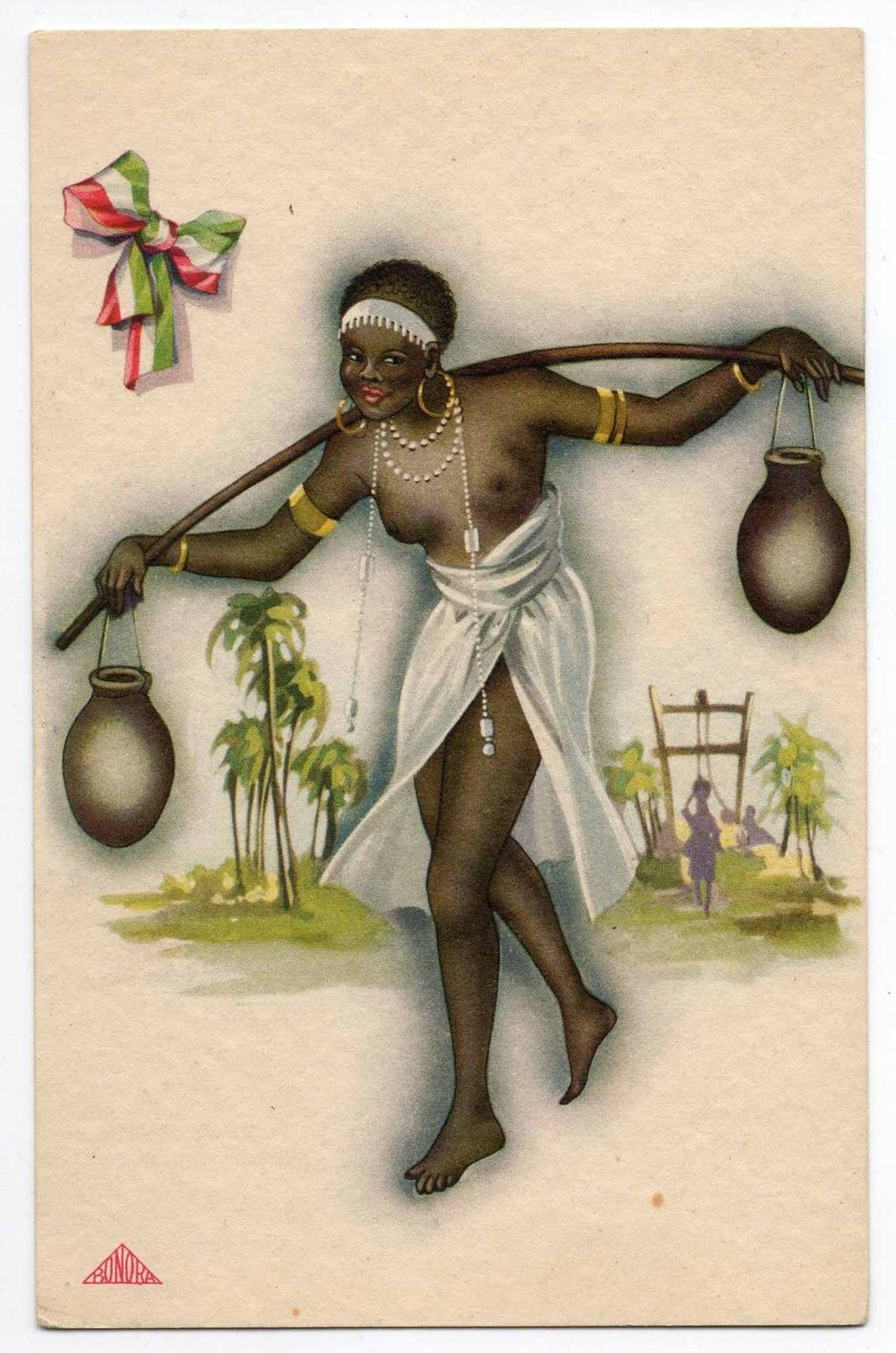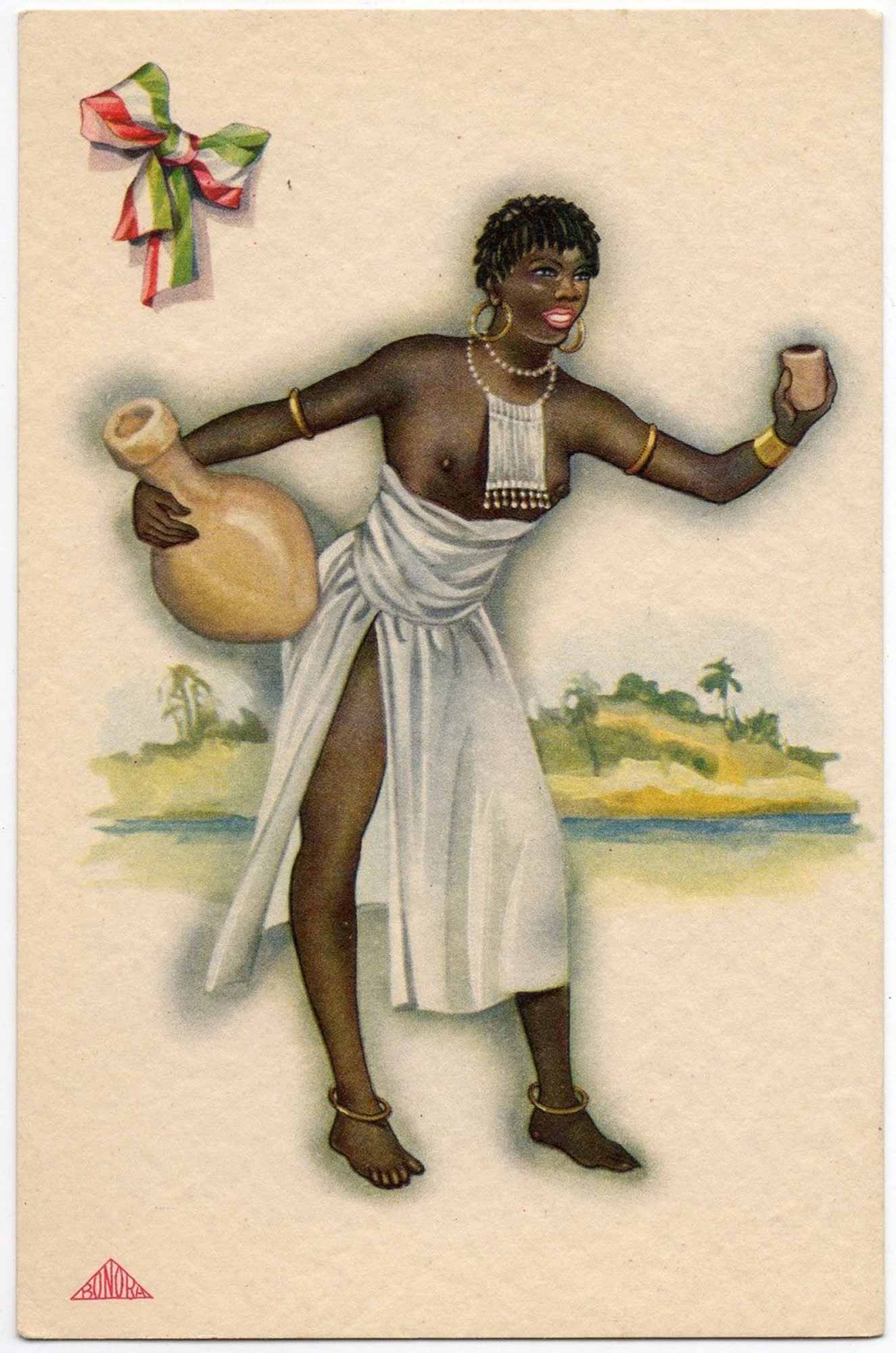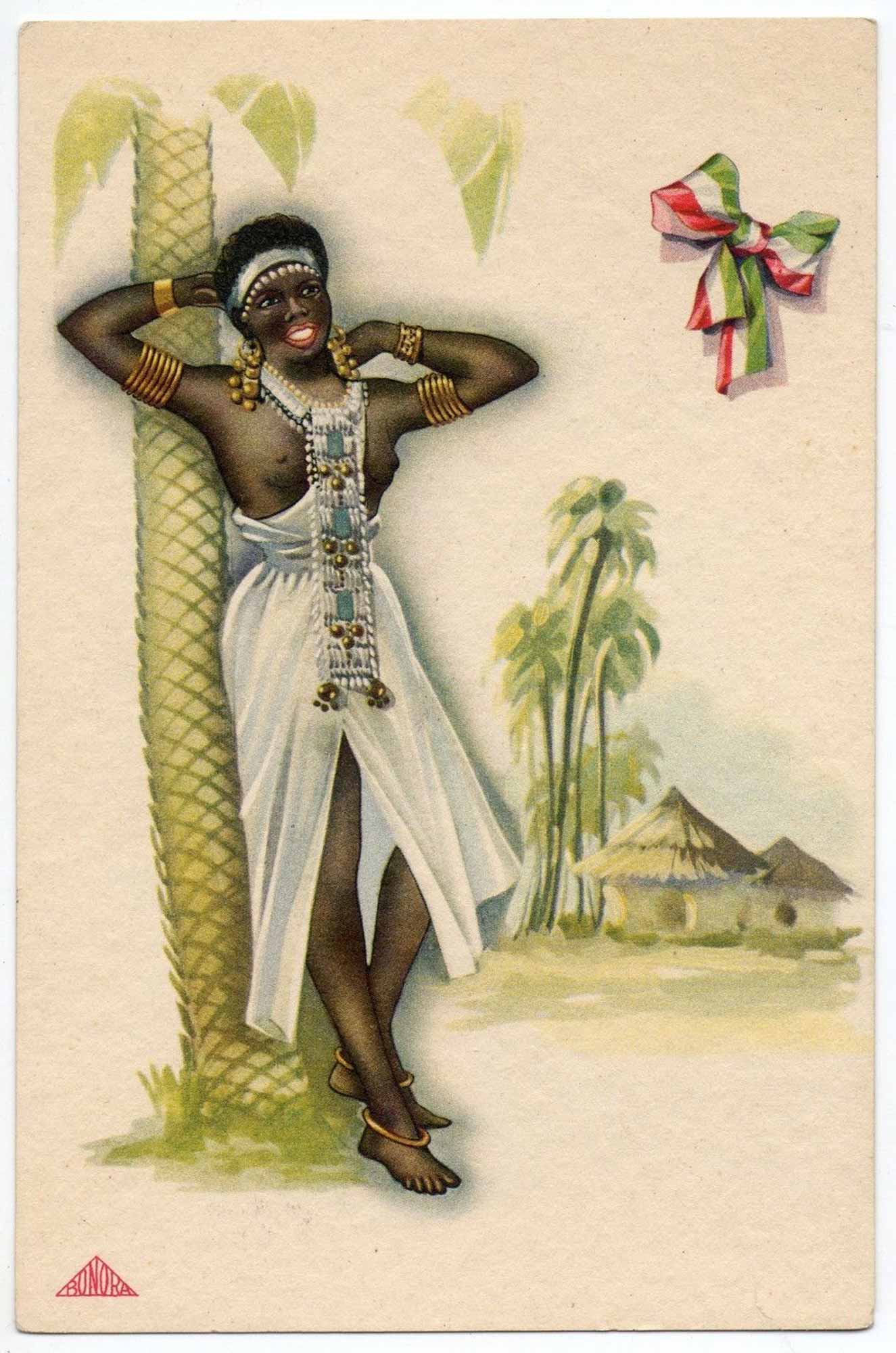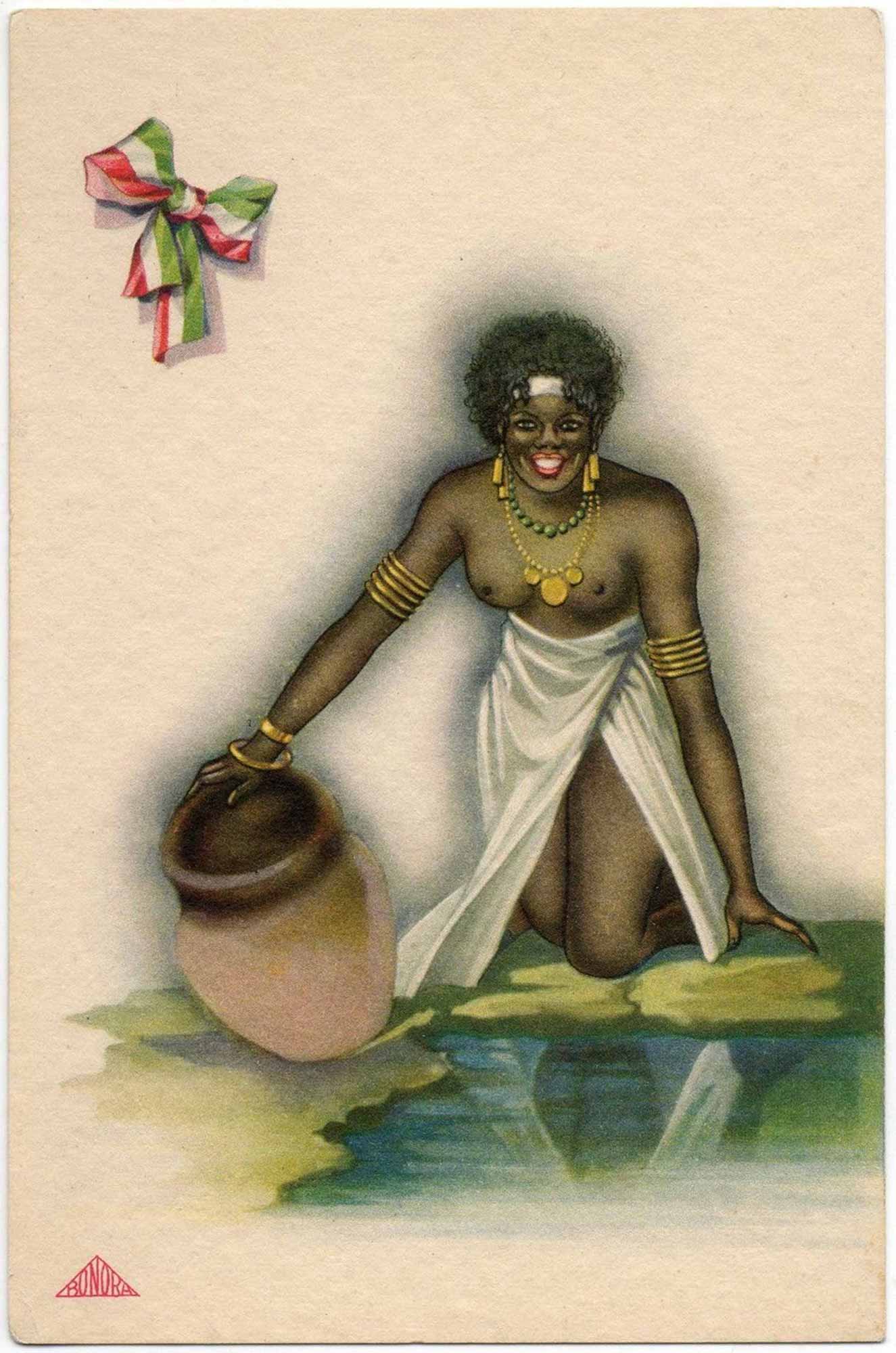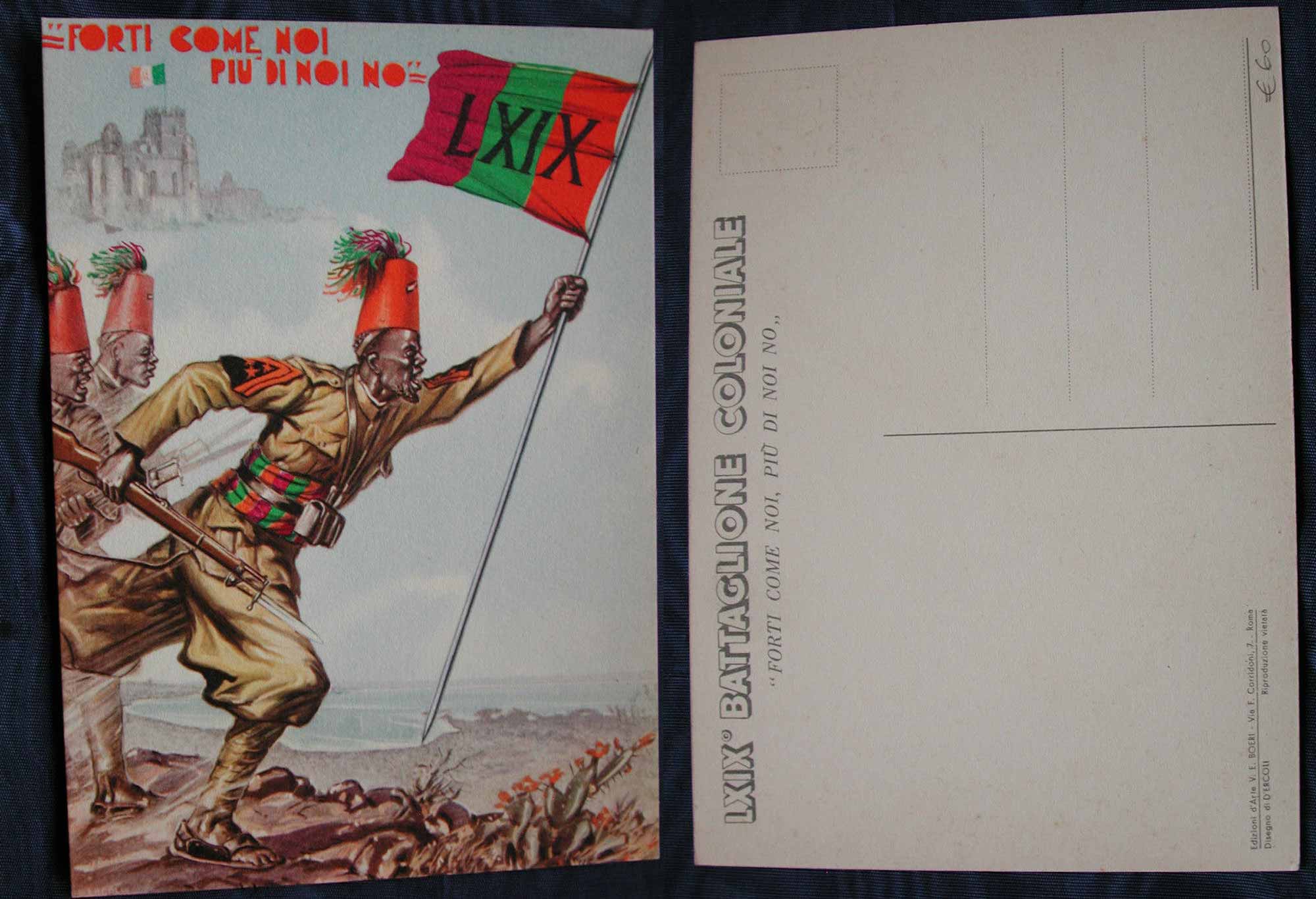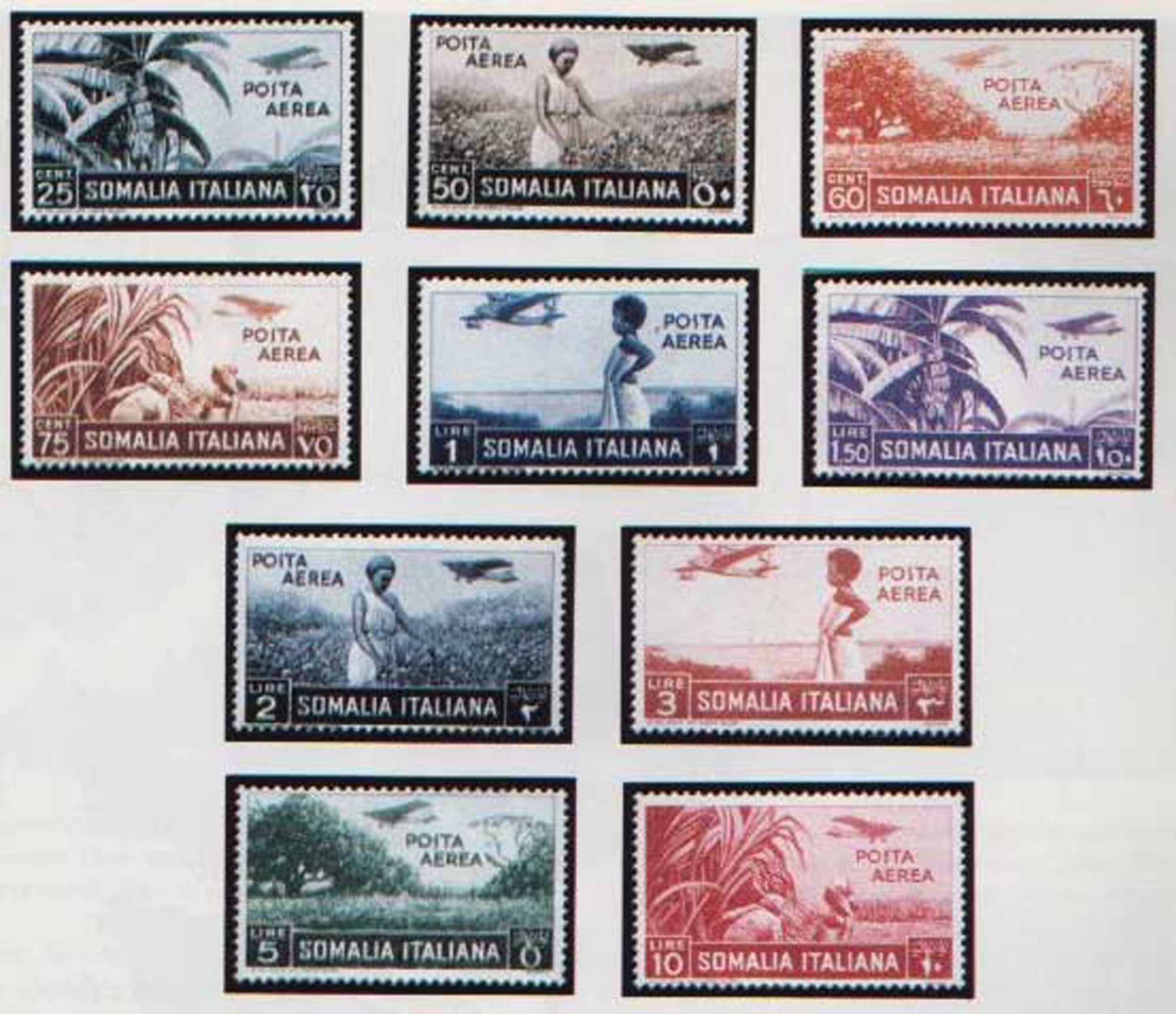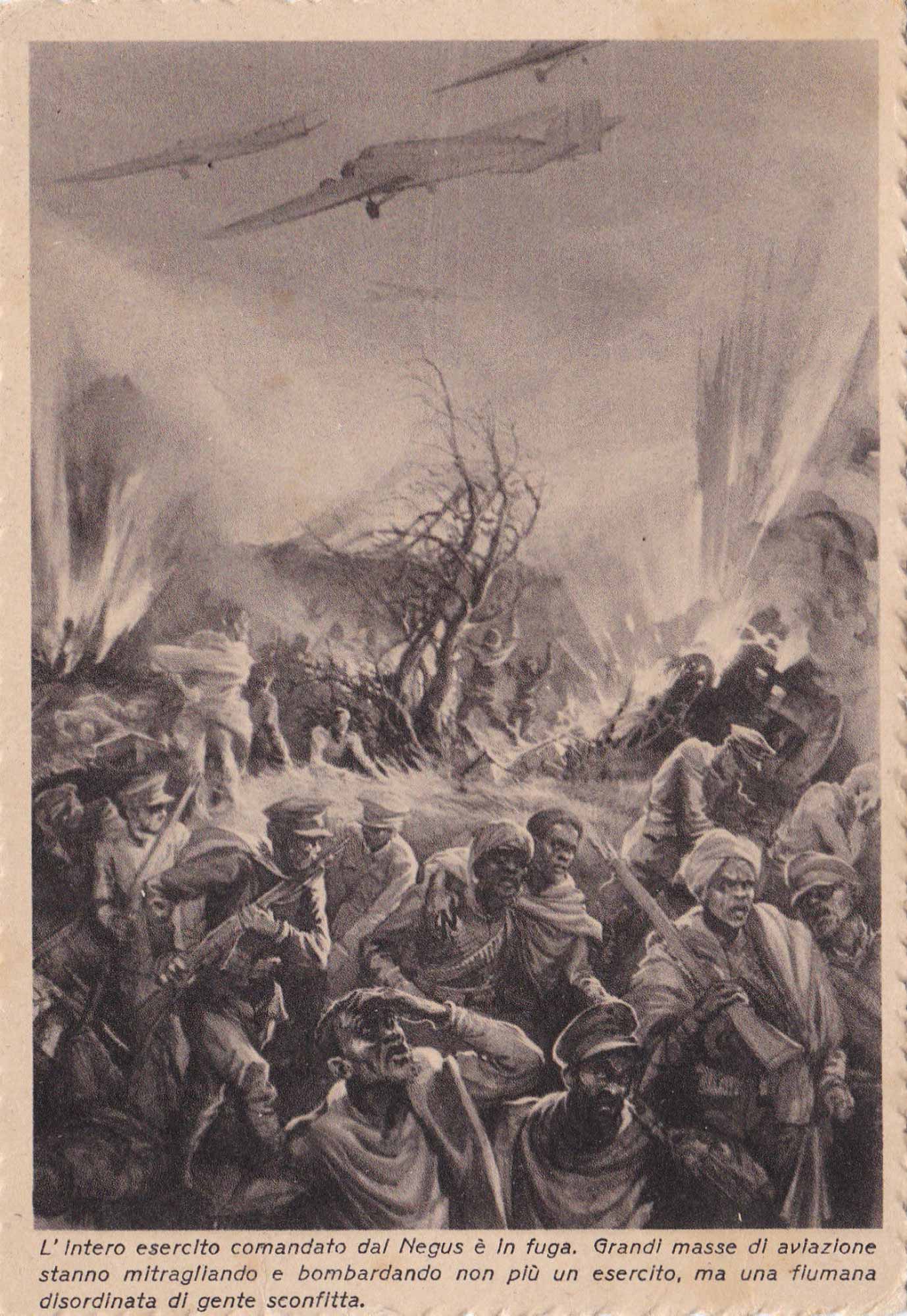Throughout the Italian colonial period in East Africa, postcards and stamps were produced as a form of propaganda, displaying a version of Eastern Africa through the Italian lens. This was often done by portraying the African locals in a dehumanized and sexualized manner. Examining several series of these objects created by a range of illustrators of the time and mass produced and sent internationally from the African colonies to Italy, we uncover a range of important themes and trends that characterize the representation of the colonial peoples. Numerous examples of these objects many of which were realized by the Poste Italiane are currently a part of numerous public and private collections and provide insight to the role of images created to cross international borders enticing young soldiers to come abroad and comforting the families of loved ones who corresponded long distance.
Dehumanization is a theme among all the collections of postcards and stamps. In a series of postcards produced by Edizione D’Arte V. E. Boeri illustrated by D’Ercoli portraying African soldiers fighting in favor of Italy, the soldiers look identical to one another in terms of body type, bone structure, uniform, skin tone and facial expression. This effectively deprives each soldier of their individuality, and infers that they are one of many replaceable units. This notion is extended through the text that reads, Forti Come Noi, Piu di Noi No (Strong like us, Not stronger than us). Furthermore, in several images, the soldiers are fighting among lions and large birds, and are portrayed as if the animals themselves. Because there are no white Italians fighting among the African soldiers, the emphasis is on the connection between the men and the animals. One image is of several soldiers in the foreground, running with a flag and weapons. In the background, there are what look to be copies of the same soldier, but translucent, and fading into the landscape. This symbolic disappearance or lack of full presence seems to amplify the soldier’s disposability and lack of full humanity.
A separate series of Postcards produced by Bonoro is characterized by East African women in front of lush landscapes, the women are dehumanized in a similar way. Although they don’t literally blend into the landscape, as the soldiers did in the previous collection, they are portrayed as synonymous with the lush and unspoiled nature that surrounds them. This is a common theme among the writing and art of Italy’s colonies during the colonial period.
Both African men and women were frequently portrayed as reduced to their physical bodies by white people hence objectified and commodified. African women’s bodies were more specifically, explicitly sexualized in the colonial period and their images were often used as visuals for to lure soldiers, many of which were illiterate to come to the colonies. African women were depicted as animalistic, hypersexualized and servile in these images which created the idea that they are available for sexual exploitation. These images created a fantasy for Italian soldiers of an erotic other and created a promise of sexual opportunities. The otherized African women were not portrayed as women but females, fostering the capacity of Italian men to come to the colonies and disregard the norms and values of society that they typically adhered to. This fantasy created an outlet onto which Europe could project it’s forbidden sexual desires. Acts of pedophilia which were frowned upon in Italy were acceptable in the colonies because these women were seen as full grown at a far earlier age based in part on differentiating customs for marriage and a less than human status. This misrepresentation of East African women to the Italian soldiers has consequences that last through today.
Yet another series of images signed B. Incegnoli examine the heroicizing of Italian Soldiers and their sacrifice. Many of these images portray Ethiopian soldiers as an animalistic other which making it natural they needed to be controlled and tamed. The savagery of these figures is juxtaposed against the composure of the white Italian Soldiers. In one image in particular the Ethiopian man is holding a scimitar contrasted by the ‘civilized’ Italian soldier who is using more advanced weaponry. The accompaniment of these images by texts that read as epic war narratives entice loved ones back home to appreciate the gallantries of the soldiers abroad.
Innumerous examples of an Italian construction of the image and representation of the colonies can be found in these illustrated goods meant to cross borders holding high the standing of the soldiers while subjugating the colonial peoples and their lands.
